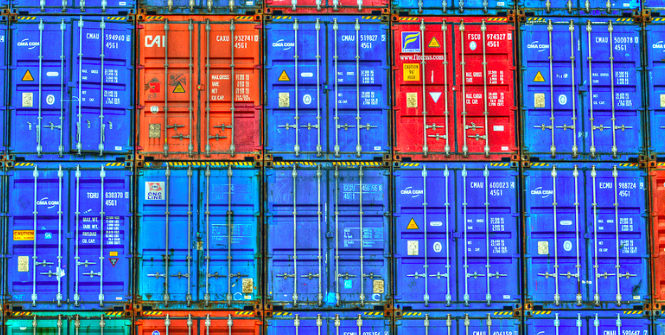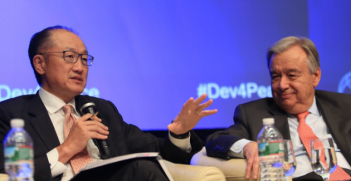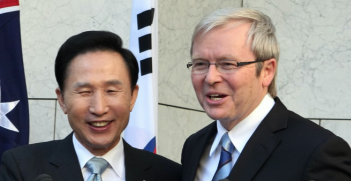The TPP: Opening the Door to a Bigger APEC Free Trade Agreement

The Trans Pacific Partnership seems likely to become reality before the end of the year. But a bigger trade agreement, covering all 24 APEC economies and 60 % of global GDP, is also on the drawing board for the future.
The Trans Pacific Partnership Agreement (the TPP)[1] is of immense importance to Australia. At a simple level it is an umbrella free trade agreement among twelve Asia-Pacific economies which generate 40 percent of world trade. At an elevated level it is a building block for a Free Trade Area in the future among all members of APEC (the intergovernmental body for Asian Pacific Economic Cooperation)[2] which generate 60 percent of world trade. That is now under consideration in APEC.
Some in Asia, particularly China, were initially hostile to the TPP. The Obama Administration endorsed the concept as part of its re-engagement in Asia-Pacific affairs after a long period of distraction in the Middle East. Not surprisingly, China’s leadership and the People’s Army saw dark intentions. The US was also revitalising its military presence in the Western Pacific.
From the moment the Obama Administration embraced it, the TPP has always looked like the training wheels for a bigger FTA among all 21 APEC economies. Six TPP participants already had bilateral FTAs with the US.[3] The others, who signed up in full knowledge they would have to engage in gruelling negotiations with the US, were Brunei, Japan, Malaysia, New Zealand and Vietnam.
This was a modest FTA with the US at the centre, until Japan opted to join. Then it covered 40 percent of global GDP and included two of the three biggest economies in the world. This turned heads in the new Xi Administration in Beijing. President Xi Jinping signalled interest in participation.
What was the Chinese interest? There is a serious need to repair China’s financial system. It is carrying huge debt and needs to be modernised. Zhu Rongji used accession to the WTO nearly 20 years before to drive regulatory reform in China’s traded goods sectors. It is commonly supposed the Xi leadership saw another opportunity to use a major international trade arrangement to advance domestic economic reform.
Beijing’s interest was politely rebuffed. The Administration considered Beijing wasn’t ready. That was true. More importantly, the Obama Administration knew this would have been too much for the US Congress to digest. Instead it was agreed APEC should begin a process to work out how the concept of bigger Free Trade Agreement among all of APEC’s 24 members could be realised. This has begun.
Building an APEC-wide FTA on top of the TPP is at least a decade away. But the prospects are momentous. It would encompass 60 percent of global GDP. This is the architecture for the Asia- Pacific economy envisaged back in 1988 when Australian Prime Minister Bob Hawke and the President of Korea, Roh Tae Woo, promoted the concept of APEC.
This is the geopolitical significance of the TPP. It will not be built on diplomatic goodwill but the common benefit of using trade and investment to increase growth. Tariffs on trade in goods among Asian Pacific economies are generally low. The economic growth strategy today is to remove barriers to investment and services. This prospectively offers very important opportunities for Australian business to expand into regional markets.
The Obama Administration got Congress to agree the TPP agreement will be adopted ‘yea or nay’, obviating demands for specific changes. Now Japan and Canada will finalise negotiations with the Administration on a handful of outstanding items. Current betting is Congress will approve the treaty before the end of the year.
There is an impression that there is a barrage of opposition in Australia to the TPP. There are claims the TPP will adversely affect public health administration, expose Australia industry to foreign investors, undermine intellectual property rights and hinder protection of Australian industries. In most cases these concerns are overstated.
These issues can, and need to, be explored. However they must not be allowed to detract from the big picture. The TPP and where it leads is fundamental to Australia’s prosperity and engagement in the Asia Pacific region in the 21st century.
Alan Oxley is Principal of ITS Global and Chair of the APEC Study Centre at RMIT University, Melbourne. This article can be republished with attribution under a Creative Commons Licence.
[1][1] Being negotiated by Australia, Brunei, Canada, Chile, Japan, Malaysia, Mexico, New Zealand, Peru, Singapore, US and Vietnam.
[2] Members of APEC are Australia, Brunei, Canada, Chile, China, Hong Kong, Indonesia, Japan, Korea, Malaysia, Mexico, New Zealand, Peru, Philippines, PNG , Russia, Singapore, Taiwan, Thailand, USA, Vietnam
[3] Australia, Canada, Chile, Mexico, Peru, Singapore





